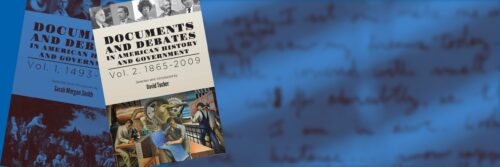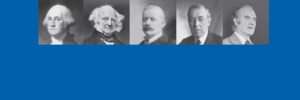
Big Trouble in a Company Town: The Pullman Strike
Today we continue our exploration of Teaching American History’s two-volume document collection, Documents and Debates in American History and Government.
July 4, 1894 was not a peaceful Independence Day for the people of Pullman, Illinois. Federal troops, responding to a federal district court injunction, arrived in Pullman the previous day, charged with the responsibility of ending a railroad strike threatening traffic across the western United States. By the end of the day, a cycle of violence between striking workers of the Pullman Sleeping Car Company, the American Railway Union (ARU) and federal troops was underway. When the violence ended in late July, as many as thirty workers were dead, and millions of dollars in railroad property had been destroyed.
Pullman, IL was a company town near Chicago. The owner of The Pullman Sleeping Car Company, George Pullman, built the factory, the stores, the parks, and all of the homes in Pullman. He controlled the wages and the rents workers paid for their homes. When the Panic of 1893 took a toll on company profits, Pullman cut wages as much as 25% but refused to reduce rents. Nor would Pullman negotiate with his employees. In response, nearly 4000 workers walked off the job, May 11, 1894, shutting down the Pullman factory.
The strike affected the railroad industry throughout the country–the dominant industry in America after the Civil War. It raised a new concern for entrepreneurs like George Vanderbilt, John D Rockefeller, Andrew Carnegie. They had built railroads, oil refineries, and steel plants, along with enormous personal fortunes. Vanderbilt’s railroads carried Rockefeller’s kerosene on steel rails manufactured in Carnegie’s steel plants. The trains also carried passengers to the new towns and cities in the West. George Pullman created a profitable niche in the burgeoning market, manufacturing luxurious sleeping cars for passenger trains. When the Pullman workers struck, Eugene Debs, leader of the ARU, called for a boycott of all trains using Pullman cars. Before the strike ended, over 250 thousand workers in 27 states were involved, disrupting almost all rail travel west of Chicago.
The Pullman Strike of 1894 is more than a footnote in the long struggle between capital and labor in the United States. For the first time, a federal court used the Sherman Anti-Trust Act, which had been designed to block the restraint of trade by corporate monopolies, by enjoining the ARU from maintaining their boycott of the Pullman company. It issued an injunction against the American Railway Union’s boycott of Pullman. Labor unions struggled to overcome the precedent thus created against work stoppages. President Cleveland, stretching the power of his office, inserted federal troops, ostensibly to ensure the delivery of the mail. Eugene Debs, convicted of contempt of court for violating the injunction, spent six months in prison and emerged a more radical leader. Public opinion began to shift in favor of Unions. Congress created the Labor Day holiday to placate worker frustration. However, it was not until the passage of the Norris-LaGuardia Act in 1932 that unions won freedom of association and protection against the types of injunctions used in the Pullman case.
Our Documents and Debates collection presents this history in Chapter 18 Urban Growth: The Pullman Strike. Short excerpts of primary documents on the strike present various sides of the debates the strike aroused. These concerned the limits of presidential powers, the role of labor unions in the newly industrialized United States, the economic rights of workers, and what tactics workers should have available in their struggles with capital.
Documents in this chapter include:
- United States Strike Commission, Report on the Chicago Strike, June-July 1894, December 10, 1894
- “King Debs,” Harper’s Weekly, July 14, 1894
- Associate Justice David Brewer, In re Debs, May 7, 1895
- Eugene V. Debs, “Liberty: Speech at Battery D, Chicago,” On Release from Woodstock Jail, November 22, 1895
We have also provided audio recordings of each chapter’s Introduction, Documents, and Study Questions. These recordings support literacy development for struggling readers and the comprehension of challenging text for all students.
We the Teachers blog is featuring Documents and Debates with their accompanying audio recordings each month until all 29 chapters are complete. In today’s post, we feature Chapter 3: Urban Growth: The Pullman Strike. On August 25, we will highlight Chapter 4: Experiments with Freedom of Conscience from Volume 1 of Documents and Debates in American History.


